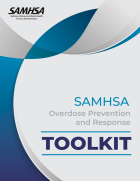Dashboard: Filter Bricks
Main page content




This issue brief provides information for State Mental Health Authorities (SMHA) about strategies for promoting person-centered planning (PCP) to enhance the quality of behavioral health services and the valued recovery outcomes of those that use them.

This report provides background history of the development of Peer Recovery (PR), including an overview of the current landscape of PR Programs. This report also provides a description of the variation in peer recovery rates, supervision, credentialing, and substance use disorder vs mental health.

Drug Abuse Warning Network (DAWN): ED Visits Involving Alcohol Short Report presents the following data from January 2021-September 2023 (1) national estimates and characteristics of alcohol-related ED visits (2) demographics of alcohol-related ED visits (3) percent of ED visits related to alcohol and at least one other substance.

This Advisory outlines how healthcare providers (i.e., obstetrician-gynecologists [OB-GYNs], primary care physicians, and other professionals who treat pregnant people) can take an active role in supporting the health of pregnant individuals who have OUD and their babies.

This report looks at state and federal laws and policies that encourage braided funding to provide substance use disorder services, best practices for braiding funds, and pathways to sustainability for substance use disorder programs.

This report provides an update on the present state of coverage, availability of, and access to, medications for treating ongoing alcohol use disorder (AUD) and opioid use disorder (OUD) and reversing an opioid overdose within state Medicaid plans. It also includes examples of innovative efforts to increase access to medications for the treatment of SUDs.

Displaying 1 - 10 out of 817

